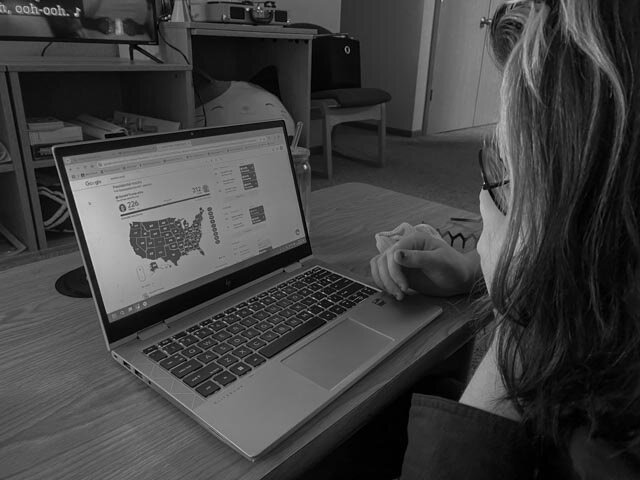Jordan Gerard/ Winonan
Continuing the 15-year tradition of saving lives, Winona State University again hosted the Red Cross’ annual blood drive Feb. 3-5 in East Hall.
The Red Cross usually visits Winona State three times a year, in addition to other state high schools and universities, Jan Hegleson of the Red Cross, said.
Hegleson oversaw the event and kept track of how much blood was donated.
Hegleson said the need for blood is huge.
“Every three seconds, someone gets transfused,” Hegleson said. “Except for the people who donate blood, we wouldn’t have any blood. It saves lives.”
“The goal is to collect 450 units of blood,” Hegleson said. “For that amount, we need about 500 people.”
As of the second day, they had collected about 143 units. 157 people had come in so far, although some people may be deferred from donating because of recent travels to places with malaria or a low iron count, which is more common for women, Hegleson said.
“Historically, WSU is a generous place,” Hegleson said. “We discovered that we need a younger donors base.”
Hegleson said people donate when they are younger, and that helps to instill a tradition of donating in their lives.
The entire process takes about an hour, although Hegleson said the act of pumping blood from the arm only takes about 10 minutes. The rest of the process is going through medical history and following protocols.
For those nervous about donating blood, Hegleson said, “99.8 percent of people say once the needle is in, it’s not as bad as they thought.”
Students waited to be signed in to have their turn at donating blood and finished at the snack table to make sure they did not pass out after donating.
Freshman Madison Steffen said that her first time donating at home in Wisconsin was “kind of exciting.”
“I have A-negative blood, which is really rare so I try to give as much as possible,” Steffen said.
The donations received from Winona State will go to a lab and be separated into plasma, red blood cells and platelets. Then it is distributed to hospitals in Minnesota, then Wisconsin, Iowa and North Dakota.
Hegleson said if a hospital out of the distribution area needed blood, they would send it there. During the recent Boston snowstorm, donors were not able to get to the donation center, so some of the Midwest’s supply of blood went to hospitals in Boston.
“The Midwest is good for donating,” Hegleson said. “We already have the blood promised to patients.”
Elementary education major Morgan McKittrick said this was not her first time donating blood.
McKittrick said she was nervous the first time she donated because she had heard “horror stories” of people passing out after donating.
“It’s an easy way to help out,” McKittrick said. “If I ever needed blood, I would be thankful for the people that donate.”









































